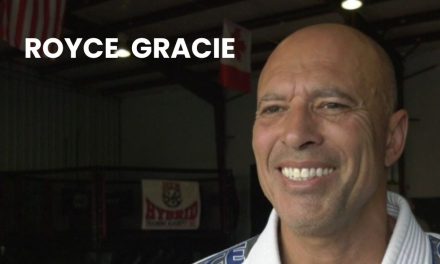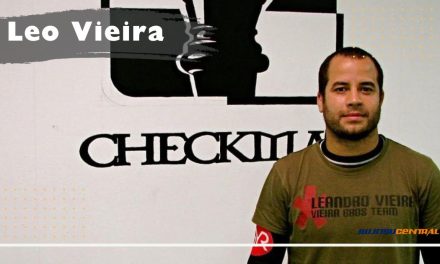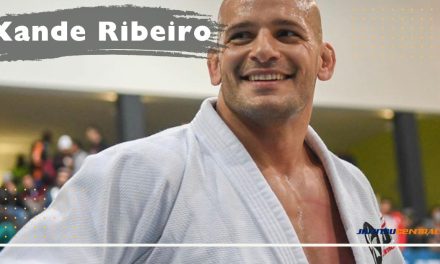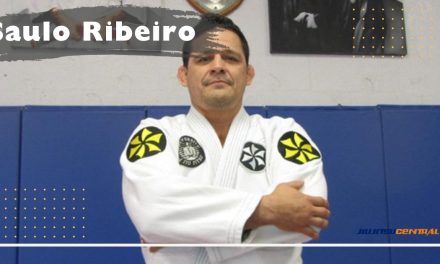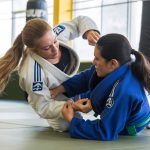Helio Gracie was a transformative figure in martial arts, best known for being one of the primary developers of Brazilian Jiu-Jitsu (BJJ). Born in Brazil in 1913, Helio was a physically frail child, which initially limited his participation in sports and physical activities. However, his determination and innovative spirit led him to adapt traditional Japanese Jiu-Jitsu techniques to suit his own body, giving birth to the modern form of BJJ—a martial art that emphasizes ground fighting and submission holds.
Gracie’s impact on martial arts extended far beyond the development of BJJ. He was an active competitor, showcasing the effectiveness of his family’s fighting style in numerous matches making him one of the best BJJ fighters of all time, which included fighters of various martial arts disciplines. His competitive spirit personified the “Gracie Challenge”, which invited practitioners of other styles to test their skills against the Gracie form of Jiu-Jitsu. Helio’s approach to fighting and teaching emphasized leverage and technique over brute strength, allowing smaller and weaker opponents to defend themselves against larger adversaries.
Key Takeaways
- Helio Gracie played a pivotal role in the creation of Brazilian Jiu-Jitsu, adapting techniques to accommodate his smaller physique.
- He demonstrated the effectiveness of BJJ through various notable fights, challenging opponents from different martial arts backgrounds.
- Gracie’s legacy continues to influence martial arts, self-defense practices, and competitive fighting sports worldwide.
Early Life and Background
Helio Gracie’s journey began in early 20th century Brazil, within the influential Gracie family. His initiation into Jiu-Jitsu revolutionized martial arts forever.
Gracie Family Origins
The Gracie family‘s roots in Brazil trace back to George Gracie, a Scottish immigrant who settled in Brazil in the 1800s. The family’s foray into martial arts began with Helio’s father, Gastao Gracie, and was later expanded by his brother, Carlos Gracie. Born on October 1, 1913, in Rio de Janeiro, Helio was the youngest of eight children. The family’s social station was one of both respect and influence in the community, setting a strong foundation for what would become a martial arts dynasty.
Introduction to Jiu-Jitsu
Initially, Helio Gracie was physically frail and not considered a suitable candidate for the rigorous training in Jiu-Jitsu that his brother Carlos imparted. However, through watching and later adapting the techniques to suit his smaller frame, Helio developed a new Jiu-Jitsu style. This adaptation emphasized leverage and technique over strength and power, which allowed him to excel despite his stature and health constraints. Your understanding of Jiu-Jitsu today is in part due to Helio’s modifications and teachings which made the martial art more accessible and effective for all practitioners.
Development of Brazilian Jiu-Jitsu
Brazilian Jiu-Jitsu (BJJ) evolved from Judo in the early 20th century. It was adapted to focus on ground fighting and leverage, enabling a smaller person to defend against a larger adversary through the use of technique and strategy.
Influence of Judo
Judo, a Japanese martial art, was introduced to Brazil by Mitsuyo Maeda, a renowned judoka. Maeda taught Carlos Gracie, who later shared his knowledge with his brothers including Helio Gracie. The Gracie family’s exposure to Judo laid the foundation for what would become Brazilian Jiu-Jitsu.
Adaptations and Innovations
Helio Gracie, smaller in stature, found certain Judo moves difficult due to the emphasis on physical prowess. Consequently, he modified techniques to suit his body type, emphasizing leverage over strength and technique over pure power. This led to the distinctive style of Gracie Jiu-Jitsu, characterized by its focus on submission holds and ground fighting.
Gracie Jiu-Jitsu vs. Traditional Jiu-Jitsu
While traditional Jiu-Jitsu encompasses a broad spectrum of the martial arts, including striking and weapons training, BJJ focuses on ground combat—submissions and position control. Gracie Jiu-Jitsu differentiates itself by its practical approach to self-defense, stressing the importance of being able to defeat a larger opponent. This has been showcased in various competitions where BJJ practitioners have used their skills effectively against competitors from other martial arts disciplines.
Helio Gracie’s Legacy
Helio Gracie’s impact on martial arts can be seen worldwide, particularly through his contributions to Brazilian Jiu-Jitsu (BJJ) and Mixed Martial Arts (MMA).
Gracie’s Influence on Martial Arts
Helio Gracie revolutionized martial arts with his philosophy and technique, which became the foundation for Gracie Jiu-Jitsu. His teaching methods and principles have influenced countless students and instructors, promoting a focus on leverage and technique over brute strength which made BJJ accessible to everyone.
- BJJ Expansion: Gracie’s adaptation of traditional Japanese Jujutsu led to the global phenomenon that BJJ is today.
- MMA Pioneering: The Gracie family, under Helio’s influence, were instrumental in the establishment of MMA, helping to found the Ultimate Fighting Championship (UFC), which demonstrated the effectiveness of Gracie Jiu-Jitsu against various martial arts.
Rickson Gracie, Helio’s son, is often considered one of the greatest BJJ practitioners of all time. His dominance in the sport and MMA has set a high benchmark for champions to aspire to.
Next Generations
The Gracie family remains synonymous with Gracie Jiu-Jitsu and MMA, as Helio’s children continued to build upon his legacy.
- Royce Gracie, Helio’s son, brought mainstream attention to the family’s style by winning the first UFC tournament.
- Rorion Gracie is credited with helping to bring BJJ to the United States and is a co-founder of UFC.
- Royler Gracie has maintained the high standards of BJJ both as a competitor and instructor.
| Family Member | Contribution to Martial Arts |
|---|---|
| Rickson Gracie | Embodied the essence of BJJ in international competition |
| Royce Gracie | Demonstrated BJJ’s effectiveness in UFC, capturing global attention |
| Rorion Gracie | Co-founded UFC and introduced BJJ to the U.S. market |
| Royler Gracie | Continued to compete and teach, spreading BJJ worldwide |
The legacy of Helio Gracie endures not only through his family’s achievements in martial arts but also through the many students worldwide who train in the art of Gracie Jiu-Jitsu, ensuring that his teachings and philosophy continue to influence future generations.
Notable Fights and Competitions
You will find that Helio Gracie’s contributions to martial arts are prominent through his engaging and historic fights. Two key moments stood out in his career: his famous matches which set the stage for Brazilian Jiu-Jitsu’s prowess, and his iconic fight against a formidable Judoka, Masahiko Kimura.
Famous Matches
Helio Gracie, a pioneer in Brazilian Jiu-Jitsu, took on various opponents in a multitude of “Vale Tudo” (anything goes) fights. His style was distinct due to its heavy reliance on submission holds, contrasting with the more striking-focused skills seen in boxing. One of Helio’s most notable opponents was Waldemar Santana. Their rivalry became legendary, stretching over a series of matches that showcased the effectiveness of Gracie’s martial art techniques.
- Waldemar Santana Fight: A significant and lengthy Vale Tudo fight that lasted an astonishing 3 hours and 40 minutes, cementing its place in martial arts history.
By utilizing a strategic combination of punches and grappling techniques, Helio Gracie not only promoted his martial art but also embodied its philosophy and technical prowess.
The Challenge with Masahiko Kimura
The bout against Masahiko Kimura, held at Maracanã Stadium in 1951, is perhaps the most significant in Helio Gracie’s career, putting Brazilian Jiu-Jitsu’s effectiveness to the test against Judo.
- Kimura Match Outcome: Despite his loss, Helio Gracie’s resistance against Kimura was impressive, ultimately leading Kimura to claim that if Helio were a Judoka, he would have been the greatest of them all.
During the match, Helio was caught in a “Kimura lock,” a reverse ude-garami shoulder lock now named after the Judoka due to this fight, which demonstrated the high-level technique and strength of his opponent.
Helio Gracie’s confrontations with both Santana and Kimura were pivotal moments that have greatly influenced the martial art world and continue to inspire combat sports athletes and enthusiasts to this day.
Gracie’s Philosophies and Contributions
Helio Gracie’s legacy is grounded in his philosophies on self-defense and martial arts, as well as his advocacy for a specific diet and lifestyle promoting health and discipline.
Self-Defense and Martial Arts Philosophy
Helio Gracie popularized Brazilian Jiu-Jitsu (BJJ), placing significant emphasis on the effectiveness of self-defense. Your understanding of martial arts would be incomplete without recognizing his method, which proves that smaller, weaker individuals can defend themselves against larger adversaries through leverage and technique. His system stresses the following principles:
- Respect for the opponent and the discipline
- The importance of technique over brute force
- Continual enhancement of skills through regular practice and sparring
- The use of BJJ for self-improvement and personal growth
Gracie’s contribution redefined martial arts, focusing not just on fights but on enhancing your overall well-being and character.
Gracie Diet and Lifestyle
Alongside martial arts, Helio Gracie introduced the Gracie Diet. This nutritional plan is tailored to improve your health and optimize your physical performance. The diet’s guidelines are precise:
- Combine foods properly for better digestion.
- Eat only natural and fresh foods to increase your nutrient intake.
- Have fixed intervals between meals to allow for complete digestion.
This nutritional discipline promotes a lifestyle that prioritizes your wellness and supports sustained physical activity. It is not merely about what you eat, but also how and when. Adopting the Gracie Diet means aligning with a tradition that extends beyond food to encompass a holistic approach to living a healthy life.
Cultural and Media Impact
Helio Gracie’s legacy extends far beyond the mats and dojos; his impact on culture and media is profound and widespread, influencing public perception and saturating various media platforms with his philosophy and methodology.
Public Perception and Influence
Your perception of martial arts has likely been shaped by Helio Gracie, whether you’re aware of it or not. The Gracie name has become synonymous with Brazilian Jiu-Jitsu (BJJ), epitomized by the martial prowess and philosophical teachings of Helio. Through media outlets like Sherdog.com, countless news features, and interviews, his influence on martial arts and self-defense has been acknowledged and respected around the world. You may have watched the Gracies in Action—an influential series of instructional videos and fights that showcased the effectiveness of BJJ.
- News Coverage: Shaped how the public viewed self-defense and competitive fighting.
- Gracie Instructionals: Provided accessible BJJ education to a broader audience.
Documentaries and Interviews
Your understanding of the Gracie legacy can be deepened through various documentaries and interviews that highlight Helio’s personal journey and the wider family’s cultural impact. He has been the subject of multiple media pieces, each dissecting the layers of his influence on martial arts. “Gracies in Action” being a prominent example, distributed widely, it offered a rare glimpse into the family’s practice and philosophy. Interviews with Helio, available on platforms like Sherdog.com, have given you an intimate look at the man behind the legend.
- Media Appearances:
- Documentaries: Articulated the Gracie’s broader impact on martial arts culture.
- Interviews: Offered personal insights into Helio’s philosophy and techniques.
Helio Gracie’s cultural and media impact continues to permeate martial arts circles and the broader discourse on self-defense and competitive sports, cementing a legacy that is as much about the power of leverage and technique as it is about the indomitable human spirit. Your understanding of modern martial arts is, in part, a testament to his enduring influence.
Later Years and Death
In his later years, Helio Gracie continued to be an influential figure in Brazilian Jiu-Jitsu, passing on his knowledge and observing the growth of the sport.
Personal Life
In his final years, Helio Gracie maintained a close bond with his family, which was central to his life. He was known for his profound respect for the martial arts and a love that he instilled in his children, many of whom became accomplished fighters themselves. Gracie’s commitment to his family’s legacy in martial arts never wavered.
Passing and Impact
Helio Gracie passed away on January 29, 2009, in Rio de Janeiro due to natural causes at age 95. His death was attributed to complications related to pneumonia. The news of his passing reverberated throughout the martial arts community where his legacy is immensely respected. His contributions continue to influence the world of combat sports, and the principles he championed are still fundamental in Brazilian Jiu-Jitsu. His passing was marked by an outpouring of respect from practitioners and fans alike, underscoring the profound impact he had on martial arts.


